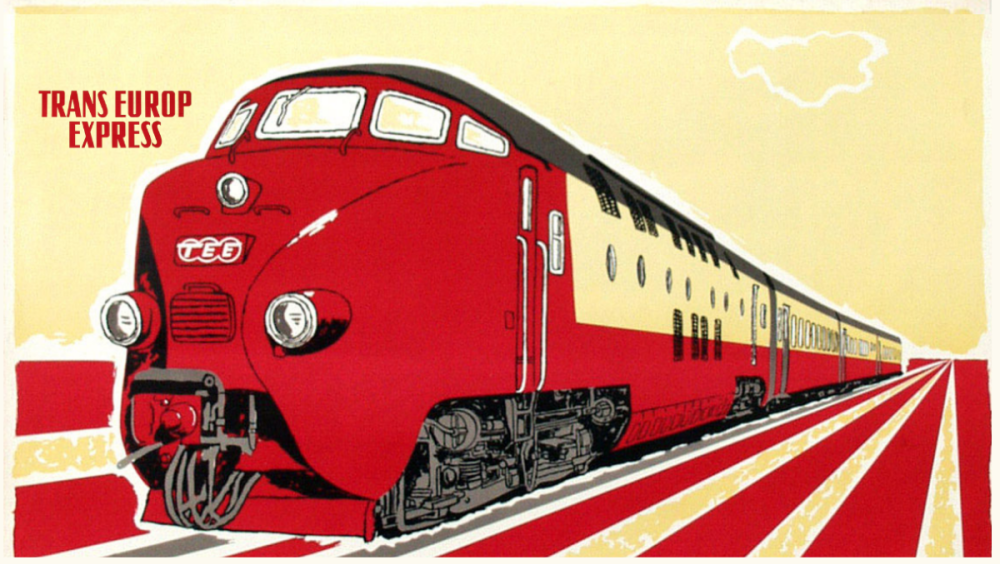The Trans Europ Express: A sustainable example from the past
The Dutch Transport Museum holds the last train carriages of the Dutch Transport Europe Express (TEE). The train, a 1950s icon of luxury and European connection, decayed on a rail yard in Amsterdam in the past ten years. Since the beginning of 2021, the Dutch Transport Museum owns the train. Volunteers from the museum have been working for months to restore some of the former glory of the train.
HERITAGE ASSOCIATION HEEMSCHUT
Heemschut, a 110-year-old Dutch private association dedicated to preserving cultural heritage, was one of the organisations that lobbied behind the scenes to prevent this last Dutch TEE train from ending up on the scrap heap.
Heemschut is the Netherlands’ largest and oldest civil society organisation dedicated to preserving cultural heritage. In 1984, the association was one of the founders of the Dutch ‘Open Monumentendagen’, which was one of the predecessors to the European Heritage Days.
The association plays an active social role by, among other things, organising a variety of public actions for a variety of cultural heritage. The association is forming more and more connections with organisations in the Netherlands and abroad.
EUROPEAN HERITAGE DAYS
Every year, Heemschut participates in the European Heritage Days. Members of the association contribute to the organisation of events. And the association’s headquarters, which is housed in a 17th-century building in the heart of Amsterdam, opens its doors to the public.
Heemschut uses the European Heritage Days, together with other organisations, to draw attention to endangered cultural heritage. A few years ago, Heemschut, for example, organised a series of events to save the so-called ‘stolpboerderijen’, an old type of farm buildings in the Northern Netherlands that is threatened by the increasing building boom in the Dutch countryside.
The events aimed to make the public and politicians aware of the importance of protecting this endangered heritage. As a result of its success, the preservation of this icon of the Northern Netherlands is receiving more attention.
TRANS EUROP EXPRESS
The recently rescued Dutch TEE train is also an icon, an icon of postwar European optimism. The train was part of the Trans Europ Express (TEE), an international train network founded by the director of the Dutch Railways in 1954. The TEE was supposed to connect 70 major European cities by rail. Business people and wealthy travellers could travel to a foreign city and back in one day in luxury and comfort.
TEE trains ran through Belgium, the Netherlands, Germany, France, Italy, Switzerland, Luxembourg, and, later, Spain. Each country had its own train design, but the train colours were the same: red and cream.
From the late 1970s, the popularity of the TEE declined. TEE faced competition from new international train networks that offered second-class tickets. Furthermore, the plane became increasingly popular for international travel.
TRANS EUROP EXPRESS 2.0
Inspired by the TEE, last year, Germany took the lead in developing a TEE 2.0. It will be a modern version of the old pan-European rail network and will connect Europe from Rome to Oslo and from Budapest to Bordeaux. Last year, twenty European countries signed a letter of intent.
The initiative is inspired by the current wave of environmental awareness that is sweeping through Europe. The train connections will offer an attractive alternative to the polluting short-distance air traffic between European cities.
EUROPEAN HERITAGE DAYS 2022
To mark this sustainable development and to highlight the often neglected care for mobile heritage, Heemschut and the Dutch Transport Museum are considering organising a European Heritage Day event around the restoration of the iconic Dutch TEE train.
The focus is on European travel in the 1950s, when people travelled in style to famous European cities such as Paris, Vienna and Amsterdam.
Both organisations would like to link this event with other European organisations dedicated to preserving TEE trains from their own countries. In European countries, old trains have a large fan base.
The Trans Europ Express was a European rail network that connected people from various European countries. Heemschut and the Dutch Transport Museum would like to reuse the train to bring people together again. The TEE has left traces all over Western Europe: loyal travellers, conductors, drivers, trains, etc. Heemschut and the Dutch Transport Museum would like to see if these people and their traces to be part of a European Heritage Day event.
The Trans Europ Express and the initiative for a new sustainable TEE 2.0 provide an excellent example of how the past can serve as an inspiration to solving today’s climate change problems.
